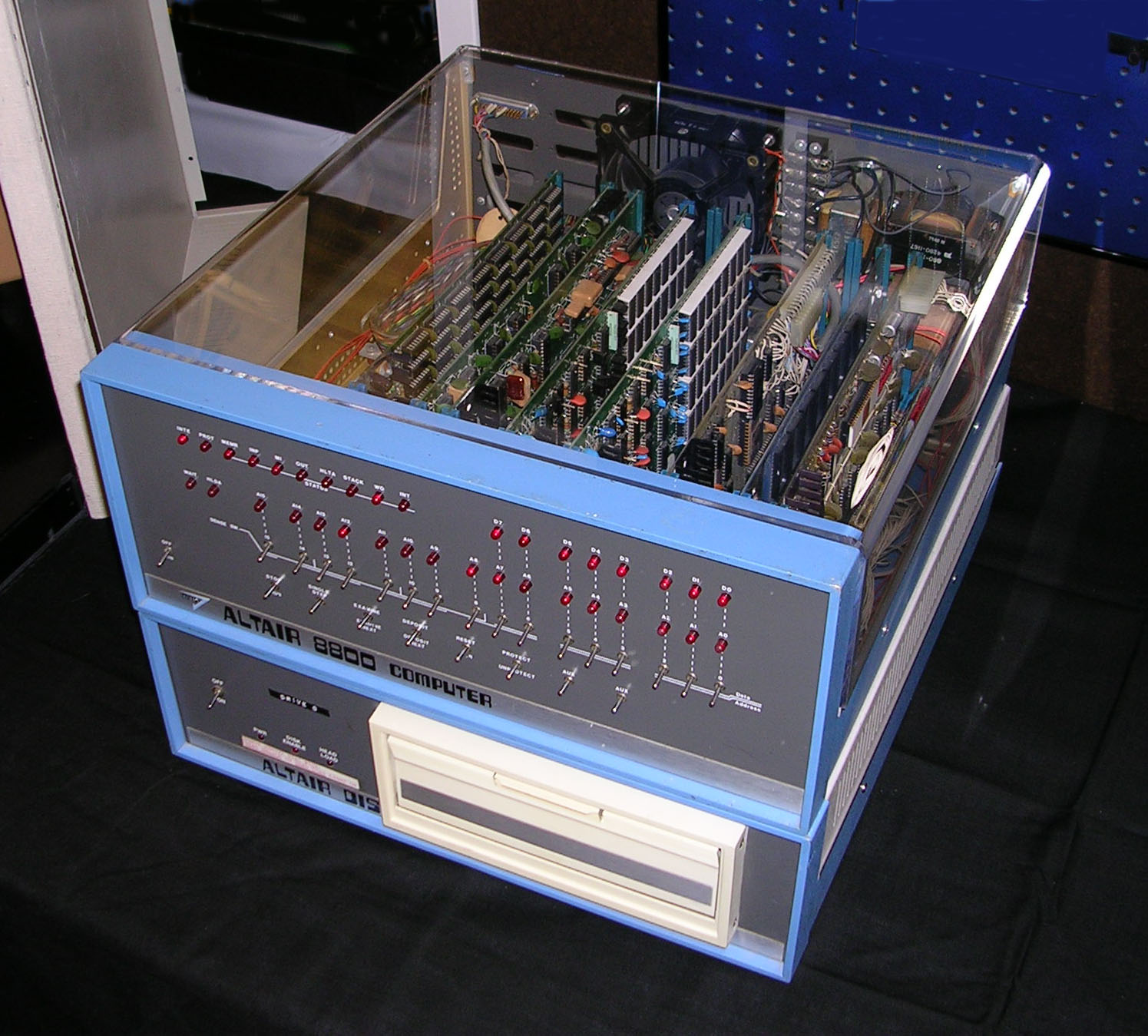Development of the single-chip microprocessor was an enormous catalyst to the popularization of cheap, easy to use, and truly personal computers. The Altair 8800, introduced in a Popular Electronics magazine article in the January 1975 issue, at the time set a new low price point for a computer, bringing computer ownership to an admittedly select market in the 1970s. This was followed by the IMSAI 8080 computer, with similar abilities and limitations. The Altair and IMSAI were essentially scaled-down minicomputers and were incomplete: to connect a keyboard or teletype to them required heavy, expensive "peripherals". These machines both featured a front panel with switches and lights, which communicated with the operator in binary. To program the machine after switching it on the bootstrap loader program had to be entered, without error, in binary, then a paper tape containing a BASIC interpreter loaded from a paper-tape reader. Keying the loader required setting a bank of eight switches up or down and pressing the "load" button, once for each byte of the program, which was typically hundreds of bytes long. The computer could run BASIC programs once the interpreter had been loaded.
The MITS Altair 8800 effectively created a new industry of microcomputers and computer kits, with many others following, such as a wave of small business computers in the late 1970s based on the Intel 8080, Zilog Z80 and Intel 8085 microprocessor chips. Most ran the CP/M-80 operating system developed by Gary Kildall at Digital Research. CP/M-80 was the first popular microcomputer operating system to be used by many different hardware vendors, and many software packages were written for it, such as WordStar and dBase II.
Many hobbyists during the mid 1970s designed their own systems, with various degrees of success, and sometimes banded together to ease the job. Out of these house meetings the Homebrew Computer Club developed, where hobbyists met to talk about what they had done, exchange schematics and software, and demonstrate their systems. Many people built or assembled their own computers as per published designs. For example, many thousands of people built the Galaksija home computer later in the early 80s.
It was arguably the Altair computer that spawned the development of Apple, as well as Microsoft which produced and sold the Altair BASIC programming language interpreter, Microsoft's first product. The second generation of microcomputers, those that appeared in the late 1970s, sparked by the unexpected demand for the kit computers at the electronic hobbyist clubs, were usually known as home computers. For business use these systems were less capable and in some ways less versatile than the large business computers of the day. They were designed for fun and educational purposes, not so much for practical use. And although you could use some simple office/productivity applications on them, they were generally used by computer enthusiasts for learning to program and for running computer games, for which the personal computers of the period were less suitable and much too expensive. For the more technical hobbyists home computers were also used for electronics interfacing, such as controlling model railroads, and other general hobbyist pursuits.




No comments:
Post a Comment